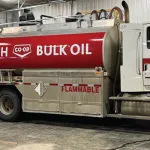
Boosting on-farm profitability by getting the most from harvest equipment
In today’s high-cost, low-margin environment, grain and row crop farmers can’t afford to leave yield and profit in the field.
Whether it’s canola, wheat, soybeans, or other crops harvested with a combine, harvest optimization expert Marcel Kringe is urging farmers to focus on one of the most overlooked, yet most impactful, management practices: measuring harvest loss to fine-tune combine calibration.
“Combine grain loss is one of the biggest invisible threats to profitability,” Kringe said. “Most farmers assume their machines are performing efficiently, but without measuring actual loss, they’re often losing more than they realize.”
Kringe said combines are powerful and complex machines, but they’re not set-it-and-forget-it systems. When key settings are not properly dialled in, grain can be damaged or lost. And, because that loss happens behind the machine, it’s easy to miss.

 , the most advanced remote drop pan solution on the market.
, the most advanced remote drop pan solution on the market. 
